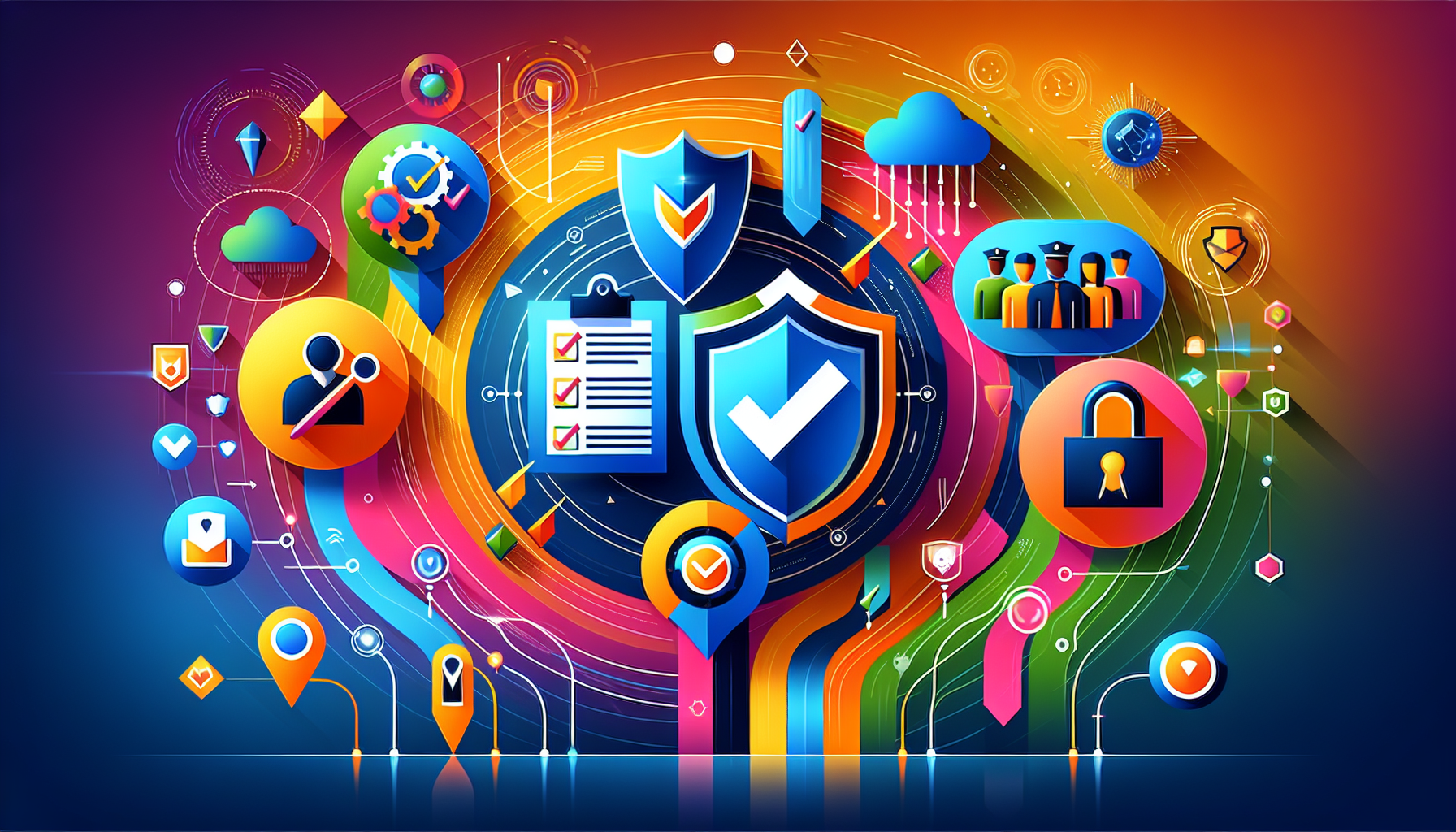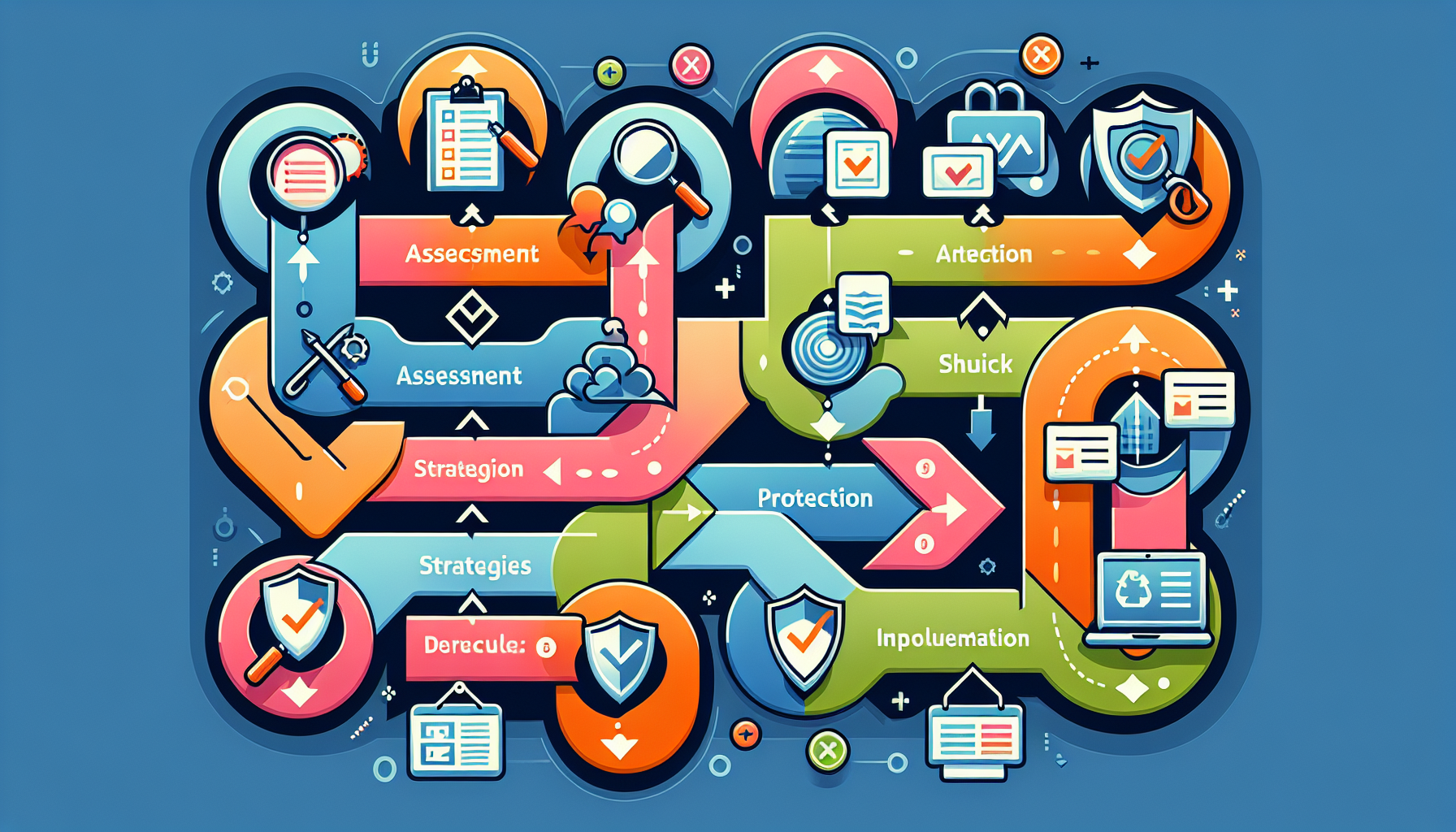Share this
Build a Comprehensive Technology Security Plan with Managed IT Service
by DefinIT on May 7, 2024
Building a security plan is a critical step for protecting your business’s data and ensuring you meet regulatory requirements. This article provides a structured approach on how to build a security plan that’s tailored to your company’s needs. You’ll learn about the essential components, from conducting risk assessments to implementing security controls and training employees, all of which are crucial in understanding how to build a security plan effectively. Key personnel, such as security officers, play a vital role in this process.
Key Takeaways
-
A comprehensive security plan is essential for safeguarding sensitive information, ensuring regulatory compliance, and enhancing customer trust.
-
Key components of a security plan include a dedicated security team, thorough risk assessments, clear security controls, incident response plans, and employee training.
-
Regular audits, updates, and leveraging technology such as AI are crucial for maintaining an effective security posture and continuously improving security measures.
-
Security officers play a critical role in maintaining security measures and responding to modern threats such as homicide/suicide bombers and improvised explosive devices (IEDs).
Understanding the Importance of a Security Plan

A well-structured security plan is essential for safeguarding sensitive information and ensuring compliance with data protection regulations. In an era where data breaches are becoming increasingly common, implementing security measures helps mitigate the risk of unauthorized access to valuable business assets. Regulatory compliance is not just a legal necessity but also a critical factor in avoiding significant fines and legal repercussions.
Moreover, having a strong network security framework supports organizational resilience, allowing quick recovery from cyberattacks. Prioritizing system security fosters customer trust, leading to increased loyalty and a competitive edge in the market. Establishing a security program is vital for protecting company data and managing risks effectively.
Recognizing these benefits highlights the necessity of a security plan. Focusing on security goals and implementing effective controls helps protect assets and mitigate risks.
Key Components of a Security Plan

A comprehensive security plan consists of several key components that address various aspects of security plans. These include:
-
An executive summary
-
A scope statement
-
Roles and responsibilities, including the role of the security officer in system security planning and organizational security
-
A security assessment
-
Security goals
-
Security controls
-
A review/update section
Each component plays a crucial role in building a strong security plan that meets the organization’s unique needs.
Security measures in a security plan should address the protection of Personally Identifiable Information (PII) and establish response plans for breach incidents. Monitoring security controls is crucial to confirm they effectively meet organizational requirements.
The security planning process should be performed periodically to ensure the plan remains effective in addressing evolving threats. Documentation included in a security plan should consist of an auditing process and vulnerability management guidelines. This ensures that the security plan is not only comprehensive but also adaptable to new security challenges.
Step-by-Step Guide to Building Your Security Plan

Creating a building security plan requires a structured approach, involving key steps to ensure its effectiveness. The first step is to identify the individuals or groups responsible for security within the organization, forming a dedicated security team. Security officers play a crucial role in implementing and maintaining security measures, ensuring that the plan is executed effectively. Engaging stakeholders and gathering feedback ensures buy-in from various departments, which is essential for the system security plan.
Strategizing beforehand is necessary for the successful implementation of your security plan. The plan must specify the budget required for implementing security measures. It should also include the costs for maintaining those measures. Regular reviews and tests keep the plan relevant and effective, particularly in response to changes in the risk environment or major incidents.
Forming a Dedicated Security Team
A dedicated security team is fundamental to the success of your security plan. This team is responsible for crafting the organization’s security policies and managing daily security operations. Forming an incident response team, consisting of experts who handle security breaches, is also crucial.
Security officers play a vital role in asset protection, enhancing intelligence and detection capabilities, and maintaining professionalism and certification standards within the security workforce. Professional IT security experts offer deeper insights and more effective identification of vulnerabilities. These experts bring a wealth of knowledge and experience that can significantly enhance the security posture of your organization.
By forming a dedicated security team, you ensure that there is a group of professionals solely focused on protecting your organization from security threats. This team will be pivotal in developing, implementing, and maintaining a strong security plan.
Conducting a Thorough Risk Assessment
A thorough risk assessment identifies vulnerabilities in both physical and informational assets. This process involves evaluating potential threats such as hackers, malware, human error, and natural disasters. Understanding the threat landscape helps your organization better prepare to mitigate risks through effective risk management.
Methods such as risk matrices, threat models, and security audits can be used to evaluate security needs. These tools help in assessing the probability of occurrence for specific threats and determining the impact they could have on your organization.
Align your security goals with business goals to ensure your security plan supports overall organizational objectives. Setting SMART goals makes progress trackable and resource allocation more effective. This structured approach to risk assessment helps in reducing potential risks and enhancing the security posture of your organization.
Identifying and Implementing Security Controls
Identifying and implementing security controls is essential for a robust security plan. Security controls are categorized into technical, administrative, and physical. Technical controls include measures such as firewalls, antivirus software, and intrusion detection systems to protect data and systems.
Administrative controls consist of policies and procedures that guide security operations, covering aspects like access controls and governance. These controls provide clear guidelines and protocols for managing security within the organization.
Physical controls include measures like locks, cameras, and alarms to secure access to facilities. Implementing these controls protects against threats and reduces the likelihood of breaches. This comprehensive approach to physical security controls is essential for developing a security plan that effectively addresses all potential risks.
Developing an Incident Response Plan

An incident response plan is a document that outlines the steps to detect, respond to, and minimize the impact of security incidents. These plans help organizations swiftly recover from incidents while minimizing operational and reputational harm.
Key components of an incident response plan include defining incidents, escalation processes, and the roles of personnel involved. Outlining processes for addressing cybersecurity breaches and involving various departments, third parties, and clients is crucial for a comprehensive response.
Regular review and updates keep the response plan relevant and effective against evolving threats. By developing a detailed incident response plan, organizations can be better prepared to handle security incidents and reduce their impact.
Employee Training and Awareness Programs
Increased security awareness throughout the organization is a vital element of security planning. The purpose of security awareness training is to educate employees about security risks and protocols. Training programs in a security plan are essential for raising security awareness and promoting best practices among employees.
Employee training is vital since employees can be either an asset or a threat based on their security knowledge. Ongoing training ensures employees understand their roles in information security.
Ongoing training and regular tests prepare employees for potential security threats. Effective training programs enhance employee engagement with technological defenses, ensuring they are utilized properly. By providing training to employees on security measures, you can ascertain the effectiveness of those measures and reduce the likelihood of data breaches and phishing attacks.
Regular Security Audits and Updates
Routine evaluations identify weaknesses within IT systems before exploitation by malicious actors. Regular evaluations of the information security management system pinpoint areas needing enhancement.
Security audits enable organizations to refine protocols and adapt to emerging threats. Establishing a consistent schedule for security audits is essential and should be tailored to the organization’s specific risk factors.
Using comprehensive assessment tools during security audits ensures a thorough evaluation of an organization’s security posture. The audit process should lead to ongoing security management, with findings used to inform updates to security measures and policies. Regular audits and updates help maintain a strong plan that addresses new and evolving threats.
Compliance with Regulatory Requirements
Organizations must adhere to industry-specific regulations such as GDPR, HIPAA, and CCPA to ensure compliance. Healthcare entities are mandated by HIPAA to implement controls for safeguarding patient data. Financial institutions are required to follow multiple regulations including FISMA and the Gramm-Leach-Bliley Act. Publicly traded companies now have new SEC regulations that require them to disclose cybersecurity incidents in annual reports. Organizations in the energy sector must comply with the NERC CIP cybersecurity standards to protect critical infrastructure.
Well-structured training programs make achieving compliance with security standards and regulations more effective. Regular audits are crucial for maintaining compliance with data protection regulations such as GDPR and HIPAA. Conducting regular audits can enhance trust among clients by demonstrating a commitment to data protection.
Ensuring compliance helps organizations avoid fines and legal issues while improving customer trust and loyalty.
Leveraging Technology for Enhanced Security

Artificial intelligence enhances security by processing large data volumes to identify patterns and detect anomalies in real-time. Machine learning algorithms can automate threat detection, improving response times and reducing reliance on human monitoring. AI-powered real-time threat detection enables swift responses to security breaches.
AI-driven systems are being developed to improve user authentication methods by analyzing behavioral patterns for enhanced security. Surveillance systems can utilize video analytics to recognize suspicious activities and notify security personnel proactively.
Remote monitoring via mobile applications allows security teams to oversee multiple locations simultaneously, enhancing overall situational awareness. Integrating access control with surveillance technologies helps to verify identities visually at entry points, reducing unauthorized access. Together, AI, machine learning, and automated monitoring create a comprehensive security strategy that enhances an organization’s ability to prevent and respond to threats.
Monitoring and Continuous Improvement
Continuous improvement involves regular assessments to identify new threats and vulnerabilities. A structured approach to information security management enhances efficiency and effectiveness. Regular simulations test the incident response plan’s effectiveness during actual incidents.
Lessons learned from each incident should be documented to continuously improve the incident response strategies. Exploring new ways to improve security posture whenever a security test fails is essential.
Gaps or weaknesses need to be identified when reviewing the security plan. The final step in developing a security plan is to monitor and improve it continuously. By adopting a continuous improvement mindset, organizations can stay ahead of evolving threats and maintain a robust security posture.
Summary
In conclusion, building a security plan is a critical step for any business aiming to protect its assets and ensure compliance with regulatory requirements. A well-structured security plan includes key components such as risk assessment, security controls, and incident response plans. By forming a dedicated security team and conducting thorough risk assessments, businesses can identify vulnerabilities and implement effective security measures.
Regular security audits and updates, coupled with compliance with regulatory requirements, help maintain a strong security posture. Leveraging technology like AI and machine learning further enhances security by enabling real-time threat detection and response.
Ultimately, continuous monitoring and improvement are essential for staying ahead of evolving threats. By following the steps outlined in this guide, businesses can develop a comprehensive security plan that not only protects their assets but also fosters a culture of security awareness and resilience.
Frequently Asked Questions
Why is a security plan essential for my business?
A security plan is crucial for safeguarding sensitive information and ensuring compliance with data protection regulations. It effectively mitigates the risks of data breaches and protects your business's valuable assets.
What are the key components of a security plan?
A comprehensive security plan must include an executive summary, scope statement, clearly defined roles and responsibilities, a thorough security assessment, specific security goals, established security controls, and a review/update section to ensure ongoing effectiveness. These elements work together to create a robust framework for safeguarding assets.
How often should I review and update my security plan?
You should review and update your security plan annually, as well as following any significant changes in the risk environment or after major security incidents. Regular assessments ensure that your plan remains effective and responsive to evolving threats.
What role does employee training play in a security plan?
Employee training plays a vital role in enhancing security awareness and educating staff about their responsibilities, significantly minimizing the risk of data breaches and phishing attacks. Effective training empowers employees to identify and respond appropriately to potential security threats.
How can technology enhance my security plan?
Implementing technology like AI and machine learning significantly enhances your security plan by facilitating real-time threat detection, strengthening user authentication, and integrating access control with surveillance systems. This modern approach ensures a more robust security framework.

